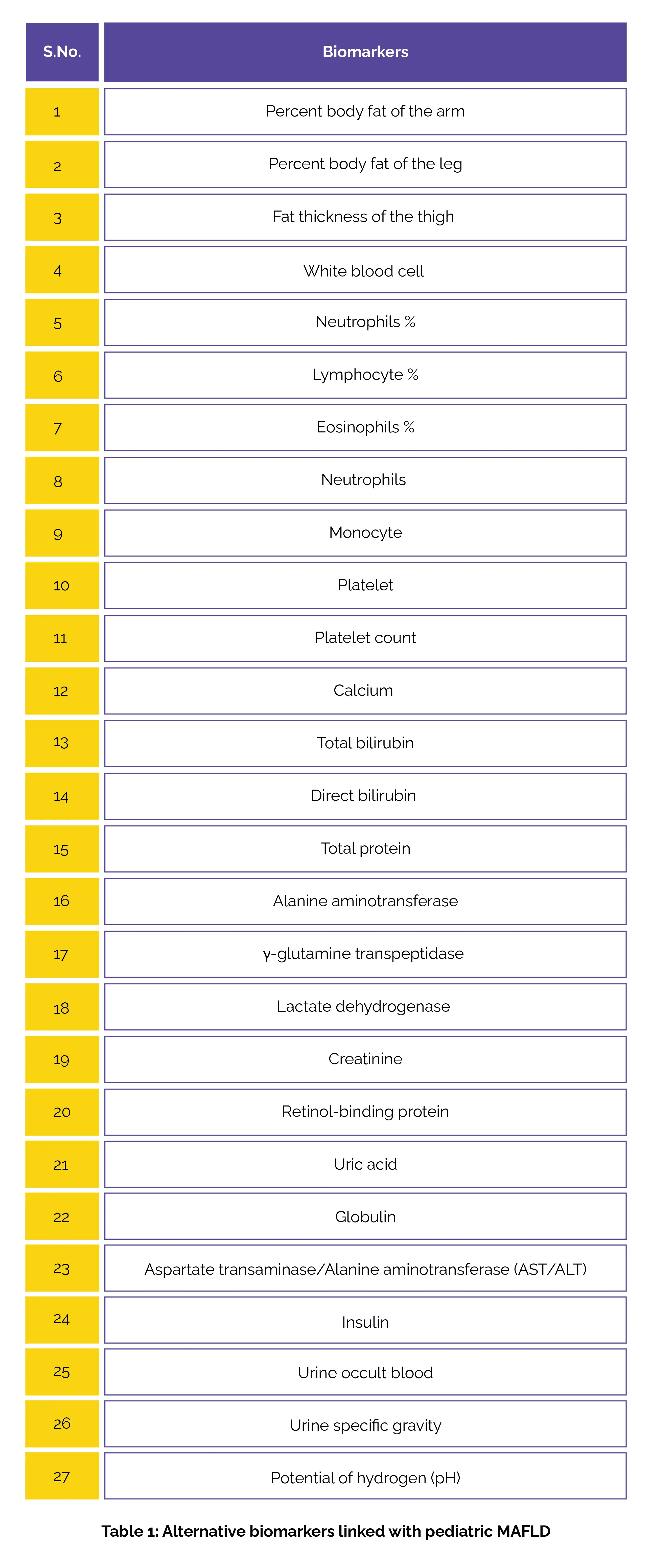Categories
Change Password!
Reset Password!


Key biomarkers, including percent body fat, thigh fat thickness, pH, total bilirubin, calcium, insulin, platelet count, and AST/ALT ratio, are linked to MAFLD in children.
A cross-sectional study led by Fan Yang and other researchers has uncovered a range of emerging and innovative biomarkers for pediatric non-obese metabolic dysfunction-associated fatty liver disease (MAFLD). While conventional diagnostic markers such as body mass index (BMI), high-density lipoprotein cholesterol (HDLC), triglycerides, glucose, blood pressure, and waist perimeter are well-established, this study explored 91 blood-based, urine-based, and body composition-based biomarkers to improve early detection and monitoring of MAFLD in children.
Researchers analyzed data from 1,108 pediatrics, identifying 113 cases of MAFLD (with a prevalence of 14.99% in boys and 5.18% in girls). Through correlation and regression analyses, they categorized biomarkers into two groups. A total of 27 biomarkers, which showed strong correlations with diagnostic biomarkers, were recognized as alternative biomarkers (Table 1).

In total, 9 novel potential biomarkers were identified through multivariate logistic regression as substantially linked with MAFLD but independent of conventional markers. These included:
(a) Blood-based markers: Plateletocrit, calcium, insulin, AST/ALT ratio, and total bilirubin
(b) Urine-based marker: Urine pH
(c) Body composition markers: Body fat percentage in the arm, leg, and thigh
Most body composition markers correlated with BMI or waist perimeter, supporting their diagnostic potential and early intervention strategies. The discovery of new blood, urine, and body composition biomarkers offers a broader and potentially more sensitive toolkit for diagnosing and monitoring pediatric MAFLD, particularly in non-obese kids where traditional markers may be less reliable. These findings pave the way for improved early detection, risk stratification, and targeted interventions for those at risk of developing fatty liver disease.
BMC Gastroenterology
Potential alternative and novel biomarkers for paediatric MAFLD: exploratory evidence from a Chinese cohort
Fan Yang et al.
Comments (0)